- Identifying the problem with your iron
- How to clean your iron's water reservoir
- How to clean blocked steam vents
- How to clean a scorched iron plate
- Tips for keeping your iron clean
Ironing is bad enough without added complications. Blocked steam vents, scaling in the water reservoir and a scorched iron plate will seriously hamper your iron's effectiveness.
A build-up of dirt could result in a ruined iron, or worse, your favourite dress.
Don't let ironing get you down even more than usual. Expert Home Tips have got solutions to every dirty iron problem you have had or may ever have.
Now, let's get that iron clean so you can get on with the fun stuff.
Identifying the problem with your iron
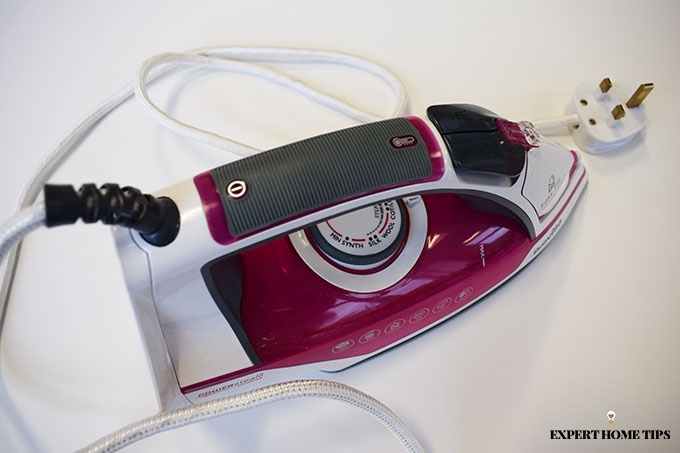
If you use your iron often, chances are you've experienced many issues over time.
Whilst we recommend giving frequently-used irons a deep clean at least once a month, for more regular maintenance, individual problems can be addressed directly.
If you're experiencing brown leakage from your iron, this is probably due to a dirty water reservoir and blocked steam vents.
If the iron seems to be sticking to, or even pulling on, the fabric, you may want to check to see if there are scorch marks on the iron plate.
Identify the problem before choosing the appropriate course of action from the list below.
How to clean your iron's water reservoir
In order to solve most issues, you must get to the root of the problem. The same is true for your iron. Often the cause of reduced steam is due to a dirty or limescaled reservoir.
If you live in a hard water area, it's likely you experience this problem a lot. Luckily, it's easily remedied using just two ingredients: distilled water and distilled white vinegar.
Ensure your iron has completely cooled before filling with vinegar. Turn the heat up to maximum, and place on your ironing board. Amp the steam to the maximum and let the iron steam for 5-10 minutes or until all the vinegar has evaporated.
Next, fill the iron with distilled water. Turn up the heat to max, and, whilst holding the iron facing downwards, press the steam button intermittently. This will clear out any remaining residue from inside. When cooled, empty the reservoir and wipe the iron plate with a clean cloth before storing.
How to clean your iron's blocked steam vents
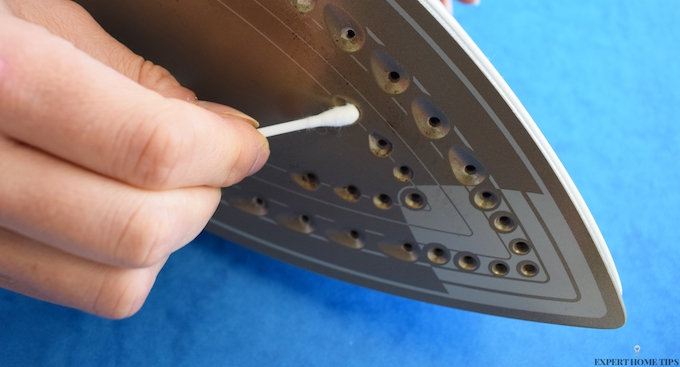
A spluttering iron is a sign that the steam vents have become blocked. This often happens if you live in a hard water area, and use water straight from the tap in your iron.
If you see brown liquid or bubbling coming from steam vents, or they appear blocked in any way, stop ironing immediately. This substance will not only make a mess of your ironing board, but it can also stain your clothes.
Firstly, it's important to clean and steam out the water reservoir as described above. This will remove any mineral deposits deep in the steam vents from the inside out. Once you have completed this step, you can move on to tackling the blockage from the outside in.
- Begin by making a homemade and all natural iron cleaner. Mix two parts baking soda to one part water until a paste has formed.
- Apply to a cool soleplate, concentrating on areas with visible mineral deposits.
- Wipe off with a wet cloth to remove.
- Next, take cotton buds dipped in distilled water, and use to clean out each of the steam vents.
How to clean a scorched iron plate
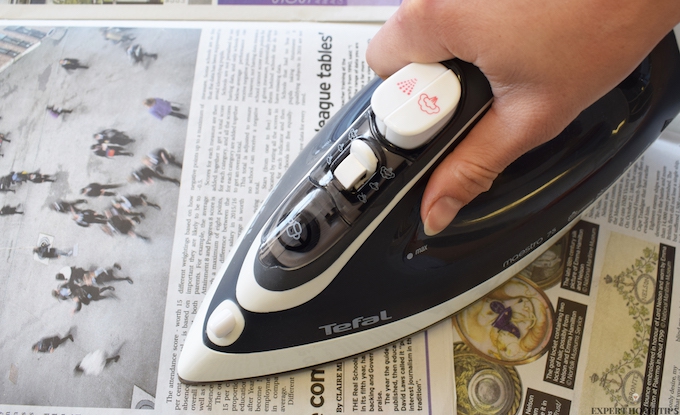
This is where things become slightly more complicated. A scorched iron plate can be tricky to clean, but the worst thing you can do is put it off. Scorched marks will pull on the fabric, and the mess could even end up melting onto your clothes. Tackle this problem ASAP using the appropriate solution below to get your iron clean again in no time.
If you act fast, removing the scorched fabric could be extremely easy. Turn it off, and allow to completely cool. Then use a credit or store card to get underneath the scorched fabric and lift it off.
If you failed to notice the scorched fabric until it has become firmly attached to the iron plate, removal will be more difficult. If the mess is sticky, the best solution is to try and remove it using newspaper.
For this method, the iron needs to be hot so take care.
- Heat the iron up until the scorched marks become sticky, ensuring the steam is turned completely.
- Then, iron over your newspaper, moving the iron to a clean section each time stickiness is transferred.
- Alternatively, you can choose to rub scrunched newspaper directly over the iron. Be extremely careful when doing this - the last thing you want is a burn as well as a dirty iron! The sharp edges of the paper will help to scrub the iron plate clean.
If your iron is scorched to the point where the marks have become almost a part of the plate itself, you need something even stronger. Hacked life has an amazing video that uses toothpaste, baking soda and vinegar to remove even the toughest marks from your iron.
Tips for keeping your iron clean
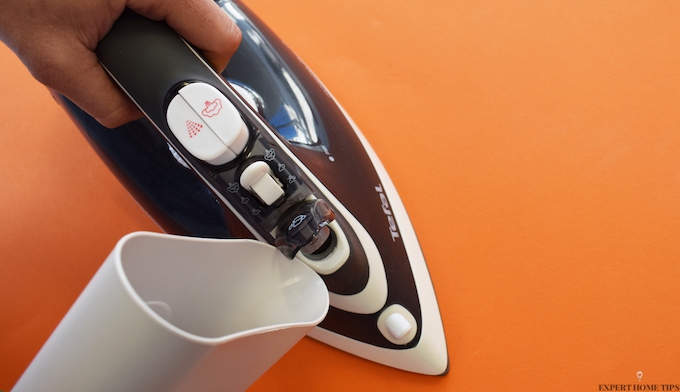
The easiest way to clean your iron is to never allow it to get dirty in the first place. Here are some easy ways to prevent similar problems from arising in the future.
1. Why you should use distilled water in your iron
Just like your kettle, hard-water will soon have an effect on your iron. Debris will collect in the water reservoir, and steam vents may become blocked.
Such problems are easily prevented by using purified water. Distilled water is best, but if you don't have any or want to save money, you can use boiled then cooled water as an alternative.
2. Fill your iron when it's cool
Irons should be filled when cool and unplugged. This is not only for safety, but it also allows the water to heat gradually.
3. Empty your iron's reservoir after every use
When you've finished ironing, always ensure you've drained the remaining water from the water reservoir. This will prevent it from becoming stagnant, growing mould, or blocking up steam vents.
4. Why you should store your iron upright
Storing your iron upright not only allows water to drain from steam vents, but it also prevents the iron plate from becoming scratched.
5. Act fast when your iron does get dirty
As with most things, the quicker you deal with a dirty iron, the easier it will be to clean. As soon as you notice something is wrong, stop ironing, identify the problem then choose the appropriate solution from the list above.
I hope these cleaning tips will help make ironing a little less painful for you. What's the problem you experience most with your iron?
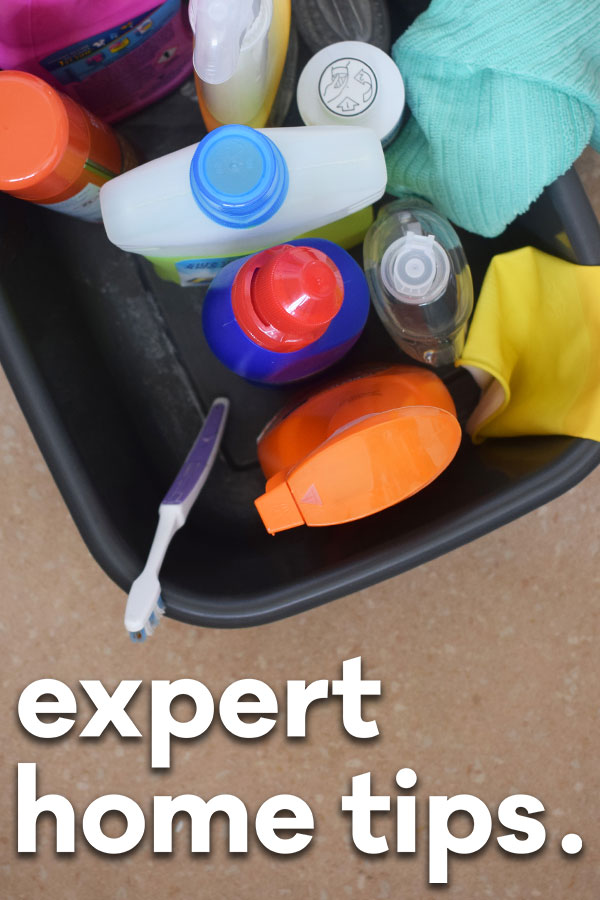
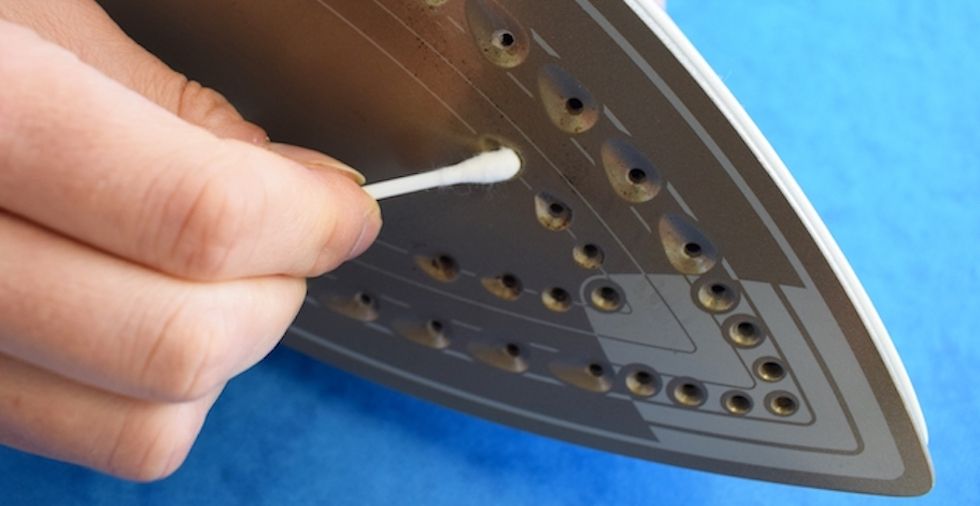
Nice tips thankyou
You're welcome, Nadia!
Have you any advice when you use a steam generated iron please I live in a hard water area and the vents in the iron get clogged fairly often used cotton bud with distilled water but problem still arise
Hi Gwyneth! Do you use a 50-50 ratio of distilled and tap water in your iron? This is recommended to reduce limescale build up. I'd also suggest emptying out the iron completely after each uses to make sure that water doesn't sit in it for too long.
My steam generator has stopped producing steam and makes a really loud noise when I press the switch for steam. Can anyone recommend a solution, it has a new filter and the plate is clean
Check for adequate water in the tank, leaks or clogs in the steam hose and piping, proper functioning of the heating element, and tightness of all parts inside the unit. If the issue persists, consult the manufacturer or a professional repair service to prevent further damage.
If you empty your iron of any leftover water after every time you finish ironing then your less likely to get a lot of these problems.
Great suggestion!
I always use filtered water in my iron and never have any problems.
That's a great idea!